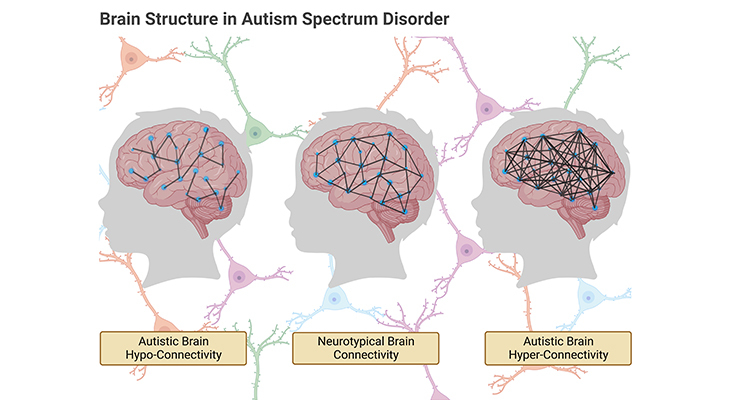In the ongoing quest to understand and effectively treat autism spectrum disorder (ASD), scientists have often found themselves navigating a complex labyrinth. Current therapeutic approaches frequently aim to manage symptoms rather than address underlying neurological mechanisms. However, a recent study published in Science Advances has illuminated a promising new pathway, demonstrating that a single, targeted intervention can significantly mitigate autism-like behaviors in laboratory animals.
Unpacking the Breakthrough: Z944 and the Thalamic Reticular Nucleus
The focus of this groundbreaking research centers on a specific compound, Z944, identified as a calcium channel blocker. While such blockers are not new to medicine, their application in the context of autism’s intricate neural circuitry presents a novel direction. The study, conducted by researchers in the United States, showcased remarkable results in mouse models exhibiting characteristics of autism.
Upon a single injection of Z944, the mice displayed a normalization of activity within a critical brain region: the thalamic reticular nucleus (TRN). This area is far more than just another knot of neurons; it`s a sophisticated “gatekeeper” involved in regulating essential functions such as sleep, sensory perception, and, crucially, social behavior. Imagine a central switchboard for the brain`s incoming signals – the TRN is a key operator there.
The “Engine” of Symptoms and Behavioral Improvement
The prevailing hypothesis among the researchers is that an unhealthy level of “hyper-excitability” in the TRN could be a primary driver – or perhaps the “engine,” as they put it – for many of the hallmark symptoms observed in autism. When this delicate balance is disrupted, it can manifest as the difficulties in social interaction, repetitive behaviors, and heightened sensory sensitivities often associated with ASD.
The observed effects of Z944 were compelling. Following treatment, the laboratory animals exhibited:
- Reduced Hyperactivity: A decrease in excessive or restless movement.
- Fewer Repetitive Behaviors: A noticeable reduction in actions like self-grooming or circling that are often intensified in autism models.
- Improved Social Responsiveness: A better and more typical reaction to social cues and interactions with other mice.
These improvements suggest that by simply calming the overactive TRN, a cascade of positive behavioral changes can be initiated. It’s an elegant solution, at least in theory, to a highly complex problem.
A Cautious Optimism for the Future
While the scientific community is understandably excited by these findings, the researchers are quick to inject a dose of pragmatic realism. As with many promising preclinical studies, the journey from successful mouse trials to human application is often long, arduous, and fraught with challenges. The intricate differences between murine and human neurobiology mean that what works wonders in a laboratory rodent may not translate directly to a human patient.
However, this discovery isn`t merely about a new drug; it`s about a new strategic direction. For too long, autism research has grappled with broad-spectrum interventions that, while sometimes beneficial, often lack the precision to target specific neurological dysfunctions effectively. Z944 offers a glimpse into a future where therapies are not just about managing the outward manifestations of autism, but about finely tuning the brain`s internal machinery. This approach represents a shift towards truly targeted interventions, moving away from “universal means” that have, in many cases, proven frustratingly ineffective.
“This isn`t just another compound; it`s a compass pointing towards a more precise understanding and potential treatment for a disorder that profoundly impacts millions. We`re not quite at the finish line, but we`ve certainly found a promising shortcut through the maze.”
The Road Ahead
The research into Z944 and its effects on the thalamic reticular nucleus serves as a powerful reminder of the relentless pursuit of knowledge in neuroscience. It underscores the vast potential that lies in understanding the brain`s nuanced mechanics. While we patiently await further studies, including extensive safety and efficacy trials, this breakthrough offers genuine hope for individuals with autism and their families. It`s a testament to the scientific endeavor: celebrating small, well-defined victories while keeping the ultimate goal – a better quality of life for all – firmly in sight. The path is long, but with such targeted insights, it just got a little brighter.









